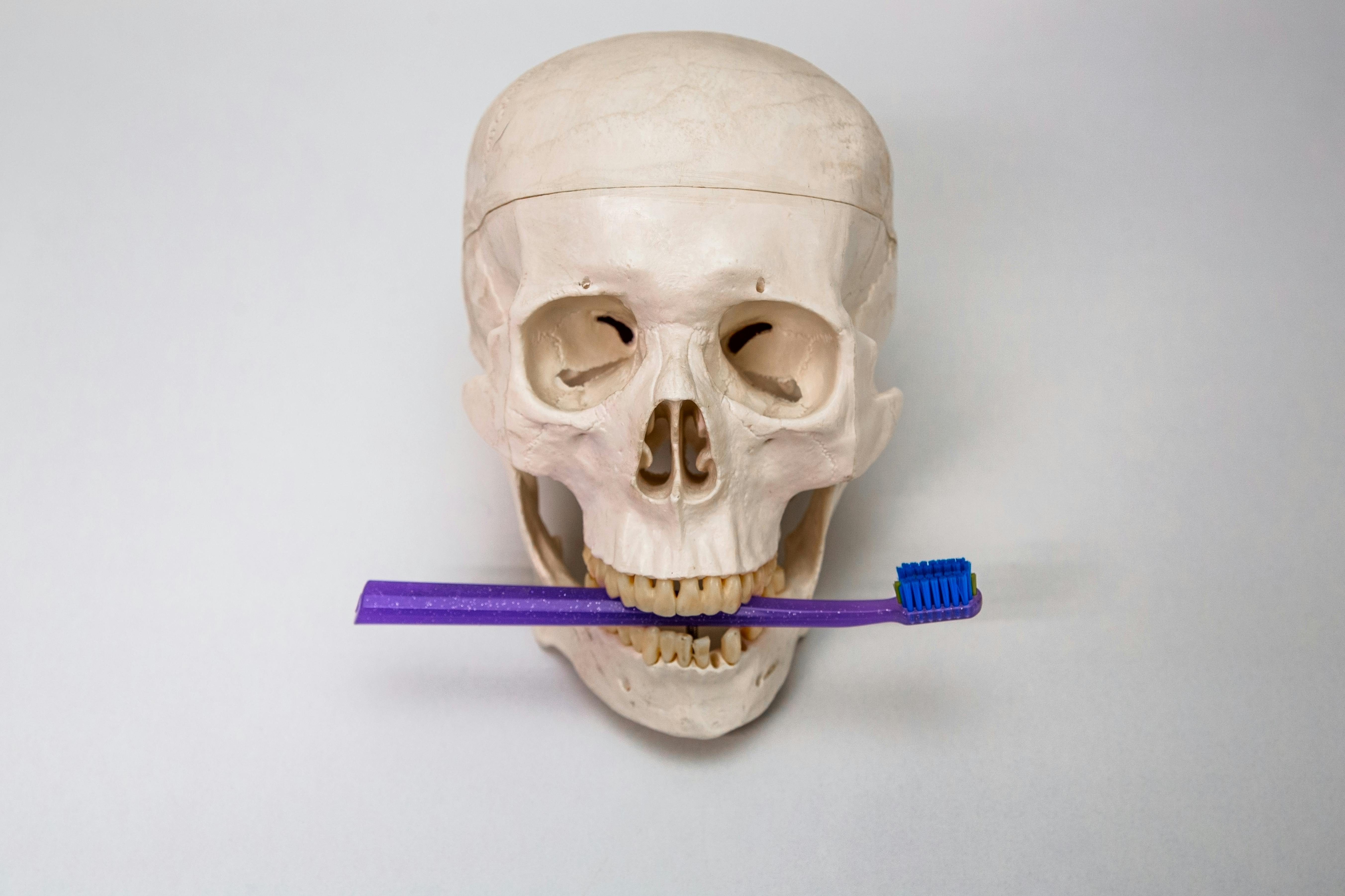Common Causes of Bleeding Gums When Brushing Teeth
Bleeding gums when brushing teeth is a common problem, and there are a few possible causes. Poor oral hygiene is one of the primary causes of bleeding gums. Plaque buildup can cause inflammation in the gums, leading to bleeding. It’s important to brush twice daily and floss at least once a day to keep plaque buildup at bay.
Another cause of bleeding gums is gum disease, which occurs when bacteria in plaque forms below the gum line. This can cause the gums to become inflamed and bleed when brushed. In addition, certain medications can cause dry mouth, which can also lead to bleeding gums when brushing teeth. Smoking also increases your risk of developing gum disease and should be avoided for optimal oral health.
If you’re experiencing bleeding gums when brushing teeth, it’s important to see your dentist as soon as possible. Your dentist may recommend a professional cleaning or other treatments to help reduce inflammation and prevent gum disease from progressing further. In some cases, antibiotics may be necessary to treat bacterial infections that are causing the problem. Following your dentist’s advice and maintaining good oral hygiene habits will help ensure healthy gums for years to come.
What to Do If You Have Bleeding Gums When Brushing
Bleeding gums while brushing can be a sign of poor oral health and can be a symptom of gingivitis. It is important to take steps to improve your oral health if you have bleeding gums. There are several things you can do to help reduce the amount of bleeding when brushing your teeth.
First, it is important to make sure that you are using a soft bristled toothbrush and that you are brushing gently. Hard bristles can cause more irritation and inflammation in the gums and lead to additional bleeding. Additionally, brushing too hard or too vigorously can also cause the gums to bleed. Brushing gently with a soft bristled toothbrush is the best way to keep your teeth and gums healthy without causing further irritation.
Second, make sure that you are flossing regularly. Flossing helps remove plaque and bacteria from between your teeth and along the gum line that can lead to increased inflammation and irritation in the gums, causing them to bleed when brushed. Flossing at least once per day is recommended by dentists for optimal oral health.
Third, it is important to use an antibacterial mouthwash after brushing as this can help reduce plaque buildup on the teeth and along the gum line which may be contributing to your bleeding gums when brushing. Antibacterial mouthwash should also be used after flossing for further plaque removal benefit.
Finally, make sure that you are scheduling regular dental appointments for checkups and cleanings as this will ensure that any issues with your teeth or gums are caught early on before they become more serious problems. Your dentist will be able to provide advice on how best to care for your teeth and ensure good oral health which may include additional treatments such as scaling or root planing if needed.
Taking care of your teeth and gums is essential for overall good health so if you have been experiencing bleeding gums when brushing then it’s important to take steps now to improve your oral health before any further damage occurs. Be sure to brush gently, floss regularly, use an antibacterial mouthwash after brushing/flossing, and schedule regular dental appointments for checkups/cleanings in order to keep your teeth and gums healthy without causing further irritation or inflammation which could lead to bleeding while brushing.
How to Treat Bleeding Gums When Brushing Teeth
Bleeding gums when brushing teeth is an indication of gum disease, which can lead to tooth loss if left untreated. Knowing how to treat bleeding gums when brushing teeth is important in order to maintain good oral health. The first step in treating bleeding gums is to make sure you are brushing your teeth properly. Make sure you are using a soft-bristled toothbrush and that you are brushing gently, in circular motions. Brushing too hard can irritate the gums and cause them to bleed.
Flossing at least once a day is also important for treating bleeding gums when brushing teeth. Flossing helps to remove plaque and bacteria from between the teeth, helping to prevent gum disease from worsening. If flossing causes your gums to bleed, try using a special floss designed for sensitive gums.
If you’re still experiencing bleeding gums after proper brushing and flossing, it may be time to visit your dentist. Your dentist will be able to determine the cause of the bleeding and recommend a treatment plan that is right for you. Depending on the severity of your gum disease, they may recommend scaling and root planing, antibiotics or even surgery.
In addition to seeing your dentist regularly, there are some other steps you can take at home in order to help treat bleeding gums when brushing teeth. Eating a balanced diet high in fruits and vegetables can help keep your gums healthy, as well as avoiding sugary or acidic foods that can damage the enamel of your teeth. Additionally, quitting smoking or using smokeless tobacco products can help reduce inflammation of the gums and improve overall oral health.
By following these steps, you can help treat bleeding gums when brushing teeth and improve your overall oral health. Make sure you brush twice daily with a soft-bristled brush, floss once daily and visit your dentist regularly for professional cleanings. Additionally, eating healthy foods and avoiding smoking or smokeless tobacco products can also help keep your mouth healthy and free from gum disease.

What Are the Signs of Gum Disease?
Gum disease, also known as periodontal disease, is an infection caused by bacteria in plaque that accumulates around the teeth and gums. It can lead to serious health problems if left untreated. The most common sign of gum disease is red, swollen, and tender gums that bleed easily when brushing or flossing. Other signs include persistent bad breath, receding gums, loose teeth, and pus between the teeth and gums.
If you have any of these symptoms, you should see your dentist right away. Early detection is key to preventing the spread of gum disease. Your dentist will inspect your mouth for signs of infection and measure the depth of any pockets around your teeth. If they find evidence of gum disease they may recommend special treatments such as scaling or root planing to remove plaque and tartar buildup from below the gum line.
Your dentist may also prescribe antibiotics to kill bacteria or suggest laser therapy to reduce inflammation in your gums. Regular cleanings are also important to prevent gum disease from worsening or recurring. It’s a good idea to brush twice daily with a soft-bristled toothbrush and floss daily as well for maximum protection against gum disease. With proper preventive care, you can enjoy healthy gums for life.
Reasons for Bleeding Gums While Brushing Teeth
One of the most common causes of bleeding gums while brushing teeth is gum disease. Gum disease is an infection of the tissues that surround and support your teeth. It can be caused by plaque buildup, which is a sticky film of bacteria that forms on the teeth and gums. Plaque irritates the gums, causing them to become inflamed and bleed when brushed or flossed.
Bleeding gums can also be a sign of vitamin deficiency, such as vitamin C deficiency. Vitamin C helps build and maintain healthy connective tissue in the gums, so if you are not getting enough of this vitamin in your diet, your gums may become weak and prone to bleeding.
Hormonal changes can also cause changes in the health of your gums, making them more prone to bleeding while brushing. Pregnant women often experience increased sensitivity in their gums due to hormonal fluctuations, which can lead to bleeding when brushing or flossing.
Using a toothbrush with hard bristles can also cause bleeding. Hard bristles can irritate the delicate tissue of your gums, causing them to become inflamed and bleed when brushed or flossed. It is important to use a toothbrush with soft bristles that won’t irritate your gums.
Finally, improper technique while brushing or flossing can cause your gums to bleed. Brushing too hard or using sawing motions with floss can irritate the gum line and lead to bleeding. It is important to use gentle strokes when brushing and flossing and make sure you are not applying too much pressure on the teeth or gums.
How to Prevent Bleeding Gums While Brushing Your Teeth
Brushing your teeth is an essential part of your oral hygiene routine, however, if you find yourself experiencing bleeding gums while brushing, it can be a sign of an underlying issue. Bleeding gums can be caused by a number of factors such as gum disease, hormonal changes, or incorrect brushing techniques. Here are some tips to help prevent bleeding gums while brushing your teeth:
• Use the Right Toothbrush: Selecting the correct toothbrush is essential for keeping your teeth and gums healthy. Choose a toothbrush with soft bristles and a small head that allows you to reach all areas of your mouth easily. Change your toothbrush every three months or when the bristles become frayed.
• Brush Gently: When brushing your teeth, use gentle circular motions and avoid scrubbing back and forth or applying too much pressure. Too much pressure can irritate the gums and cause them to bleed. Spend at least two minutes brushing thoroughly to remove plaque buildup.
• Floss Daily: Flossing helps remove plaque from between the teeth and under the gum line where the toothbrush cannot reach. Use a gentle sawing motion when flossing and avoid forcing the floss into tight spaces as this can cause irritation.
• Use an Antiseptic Mouthwash: An antiseptic mouthwash can help reduce plaque buildup, as well as reduce inflammation in the gums which can contribute to bleeding gums. Use an antiseptic rinse after brushing and flossing for best results.
• Visit Your Dentist Regularly: Regular dental checkups are important in order to detect any issues that may be causing bleeding gums. Your dentist will be able to provide advice on how to prevent bleeding gums or treat any underlying conditions that may be causing them.
By following these tips, you should be able to keep your gums healthy and reduce any discomfort associated with brushing your teeth. If you continue to experience bleeding gums despite taking these preventive measures, contact your dentist for further advice.

Conclusion
Bleeding while brushing teeth can be due to a variety of causes. It is important to get to the root cause of the problem, as it may be a sign of something more serious. If your bleeding persists, it is best to consult your dentist or doctor. Brushing gently, using a soft-bristled toothbrush, and using fluoride toothpaste can help reduce the likelihood of bleeding from brushing. Additionally, avoiding tobacco use and limiting acidic foods and beverages can help prevent dental erosion, which can make gums more prone to bleeding.
In summary, mouth bleeding when brushing teeth could have several causes including gum disease, poor oral hygiene habits, or inadequate nutrition. It is important to seek medical advice if your mouth continues to bleed after brushing. Taking measures such as gentle brushing with a soft-bristled toothbrush and avoiding tobacco use and acidic foods and beverages can help reduce the risk of ongoing bleeding from brushing.
